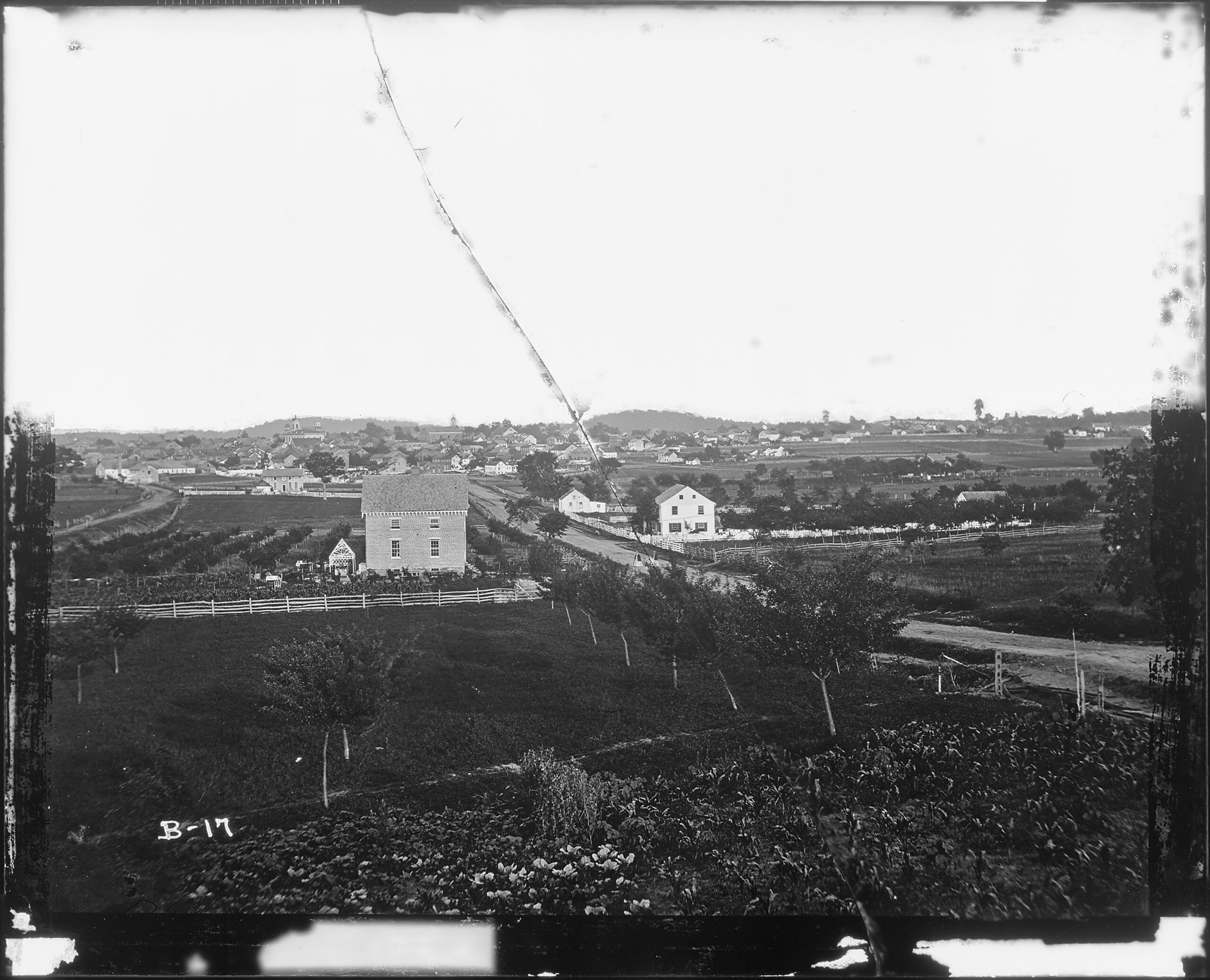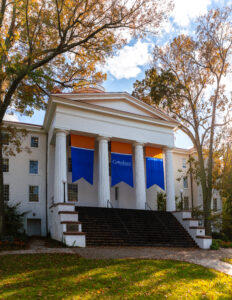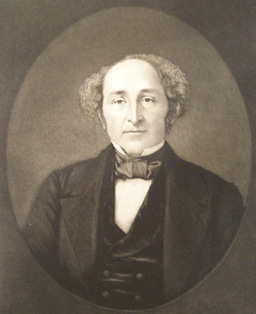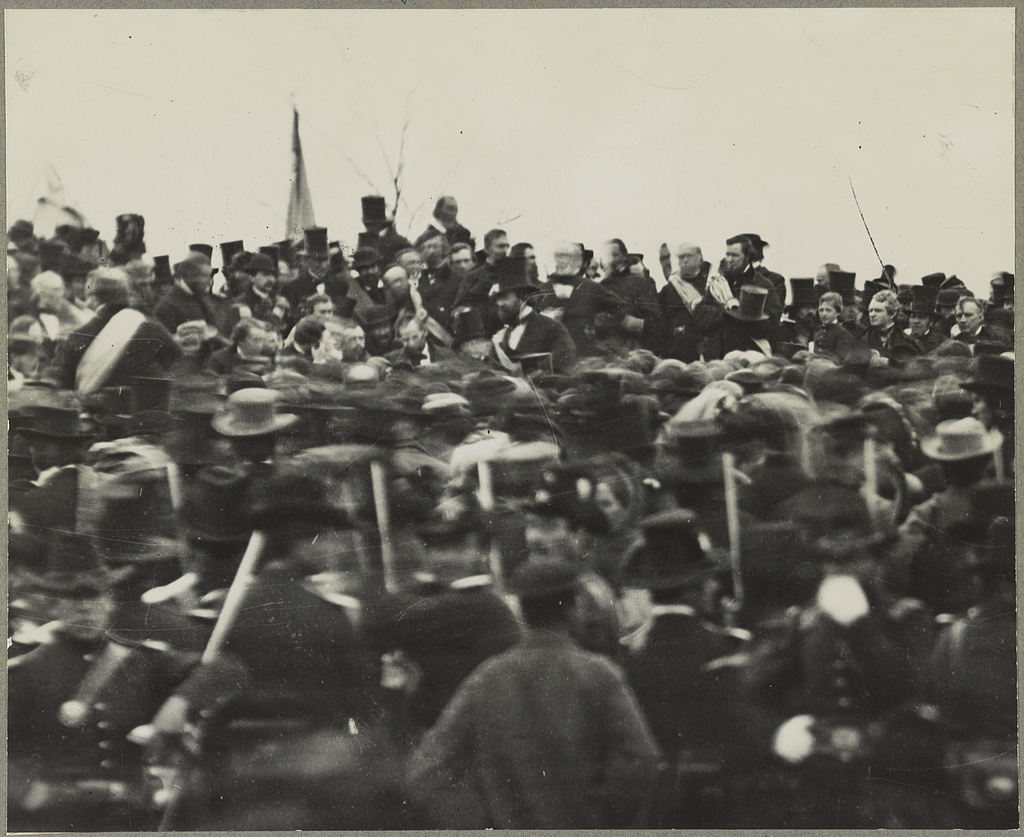By Vincent DiFonzo, Editor-in-Chief
July 1, 1863, at first, appeared to be a relatively normal day for students at Pennsylvania College, despite the Civil War inching closer and closer to the town. A number of students were still studying and attending classes at Pennsylvania College, the former name of Gettysburg College.
Confederate forces had crossed the border into Pennsylvania and moved into Gettysburg in the days leading up to the battle. In the early hours of July 1, cannon fire rumbled in the distance as Union forces engaged.
Unbeknownst to students, the most decisive battle of the American Civil War was about to take place right on and around their campus. More than 150,000 soldiers were descending on their small town of just 2,400, and the resulting battle would deliver a major blow to the Confederacy and turn the tide of war in favor of the Union.

A view of Gettysburg, pictured in 1863, shortly after the Battle of Gettysburg. The Pennsylvania College campus is seen in the background (Matthew Brady/U.S. National Archives).
Leading up to the battle, the campus was much less busy than usual, as many students had already left to fight in the war. As the battle unfolded in Gettysburg, the majority of students left to seek shelter and very few remained on campus.
The College at first did not cancel classes on the first day of battle, a Wednesday. Only when the battle literally moved through campus did classes get canceled and students move to either take cover, watch the battle unfold or aid in the fight. The first day of battle primarily took place just north of campus, while the second and third days saw fighting in the fields south of town.

Pennsylvania Hall, pictured in 2023. (Photo Eric Lippe/The Gettysburgian)
Campus buildings were taken over and used to aid both Confederate and Union forces. Pennsylvania Hall, built in 1838, was used as a field hospital and observation tower. Nicknamed “Old Dorm,” the building that now houses the College’s administration hosted dorm rooms and classrooms at the time of the battle.
The building was first used by Union officers for logistics and observation. They were led there by chemistry and mathematics professor Michael Jacobs, who allowed them to use the building. Soon, the Union retreat led to the campus falling behind Confederate lines. The building was taken over and the cupola was famously used by Confederate General Robert E. Lee to observe the battlefield.
Students watched as their residence hall turned into a bloody, chaotic field hospital, full of the sick and mortally wounded. From July 1 to July 29, the building would continue to serve as a hospital alongside students who continued to live and in the building. Upwards of 900 injured were treated in Penn Hall, and many died in the building.
“When I came to my room I saw it afforded ample accommodation for three — one on the bed and two on the floor. All rooms, halls and hallways were occupied with the poor deluded sons of the South,” remarked one College senior who returned to campus on July 6, three days after the battle’s conclusion.

Campus as seen in August 1863. Pennsylvania Hall is seen. (Mathew Brady/U.S. National Archives)
Even the home of College President Henry Baugher, who chose to remain in Gettysburg through the battle, was taken over and used as a field hospital by Confederate forces.

Henry Louis Baugher, who served as College president during the Battle of Gettysburg.
By the end of the battle, Union forces had reoccupied campus and resumed Penn Hall’s use as a field hospital. On November 19, 1863, students walked through the town to hear President Abraham Lincoln’s remarks at the dedication of the Gettysburg National Military Cemetery. Now, students relive this during the first-year walk, a College tradition in which new students retrace the steps of the students who heard Lincoln’s famous Gettysburg Address 161 years ago.
Remarkably, only one civilian, Jennie Wade, was killed during the Battle of Gettysburg. However, the battle had serious consequences on the town and the College. Many residents and students fled the town, while those who remained were left to clean up.
With such a large amount of soldiers entering the town, looting and theft of the towns supplies took place. Thousands of corpses littered the battlefields and the townspeople spent months burying the deceased. Some wounded soldiers were unable to travel and became stranded in Gettysburg for months after the battle, leaving only locals to care for them.
Students continued to find bones, bullets and other remnants of the battle for years afterward.
The 161st anniversary of the Battle of Gettysburg will be recognized July 1-3 with historical reenactments, expanded National Parks Service tours and ranger events and battlefield walking tours.

President Abraham Lincoln delivers the Gettysburg Address, November 1863. (Photo U.S. National Archives)
